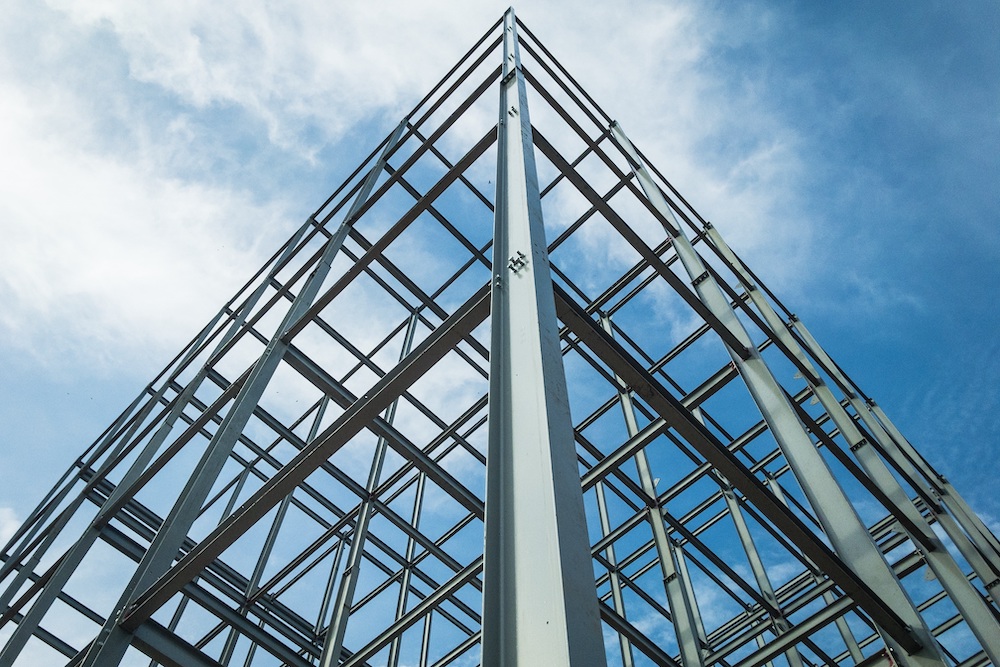Steel in Architecture
Steel is one of the most versatile and widely used construction materials in the world. And it’s not hard to see why – steel is incredibly durable, cost-effective, and easy to work with. But in recent years, architects have been re-inventing the future with the help of steel, using it to create architectural solutions that are both sustainable and aesthetically pleasing.
Steel is not just strong, it is also the ultimate wingman for architects, its also a bit of a fashion icon. With its sleek, modern look and the ability to create unique designs, steel buildings are turning heads all over the world. They are the architectural equivalent of a little black dress – simple, elegant, sexy and always in style.
One of the key reasons that steel is such an attractive material for architecture is its durability and ductility. Steel framing materials can withstand damage from extreme weather conditions, earthquakes and other types of movement, (if a zombie attack was anywhere in our future, I mean its not impossible, right? steel would withstand that too) making it an essential choice for meeting architectural needs. And because steel is a ductile material, it can respond to overload in a controlled manner with managed load retention. Its size and shape can be customized to offer a level of robustness that cannot be achieved by other, more brittle construction materials. Steel offers excellent structural support while allowing for a reduction in thickness. Due to its ductility, steel can be further fabricated to accommodate architects design visions in a variety of ways including but not limited to exposed steel structures, curved steel designs, visual effects achieved through various finishes applied to the steel and steel accents.
But steel is not just strong – it’s also cost-effective. Steel is abundant and easy to fabricate, which means it is affordable and ultimately passes the cost savings to the end consumer. And because steel can be prefabricated, the construction process can be faster with fewer people needed on site, resulting in labour reduction.
Safety is always a top priority when designing and constructing a building, and steel is an ideal choice because it is non-combustible, resist to rust, corrosion and shattering. Through the use of steel, innovative architectural structures can be built faster with improved safety outcomes.
In addition to its durability and cost-effectiveness, steel is also a lightweight material. Compared to other building materials like concrete, steel is the lighter option. This means it is easier to transport and erect in a shorter time. A steel structure is 30% – 60% lighter than one using concrete as its main component.
But perhaps the most compelling reason to use steel in architecture is its sustainability. As concerns about the environment and resource depletion grow, choosing an environmentally-friendly building material is crucial. And steel fits the bill perfectly. Steel is one of the most sustainable materials, as it is 100% recyclable. In addition to this, the strength of steel is not compromised through recycling. Steel recycling efforts save 75% of the overall energy used in production from raw materials. This has huge benefits in the fight to save natural resources and prevent excess greenhouse gas emissions. Steel recycling makes possible what is often called ‘closed loop production’ – a material eco-system where no materials are wasted but where everything is re-used over and over again.
Moreover, steel has a low carbon footprint when compared to other construction materials like concrete or brick. This is because the energy required to produce steel has decreased significantly in recent years, thanks to advances in technology and the use of renewable energy sources. And when steel is recycled, the energy savings are even greater. Steel is like the organic, free range chicken of building materials – good for the environment, and good for your conscience.
In conclusion, steel is not just a material – it’s a superhero of the architectural world. Steel is an incredibly versatile and sustainable material that offers architects and builders a wide range of benefits. From its durability and cost-effectiveness to its lightweight nature and low carbon footprint, steel is a wise choice for those who care about the environment and want to create buildings that are both stylish and functional. With steel, the possibilities are endless, and we can look forward to even more innovative and sustainable architectural designs in the years to come. So, the next time you see a steel structure, take a moment to appreciate its strength, beauty and wit.


